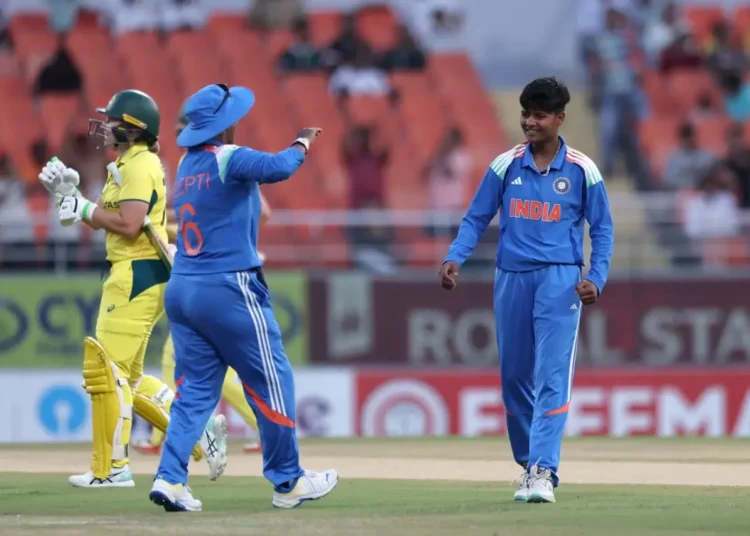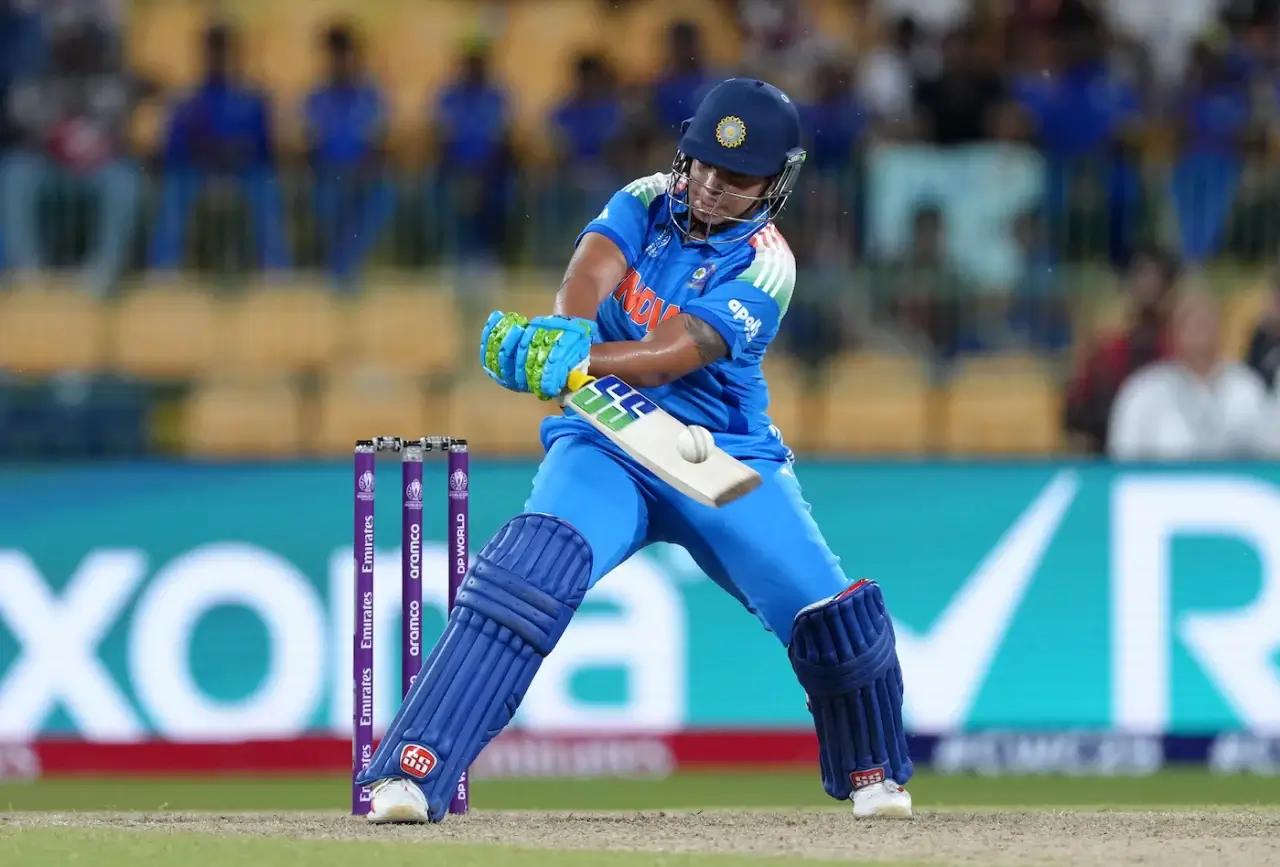Sophie Devine walked into the press room smiling, calm, and slightly amused. Her trademark deadpan humour returned when she said, “Thanks for not calling me old.” It was a subtle reminder that experience, not age, defines her presence. New Zealand’s campaign, however, has struggled for rhythm after two losses and two washouts, which India hopes to avoid against Australia.
The Women’s ODI World Cup now stands at a decisive stage for both teams. India has lost three consecutive games, each slipping away after strong starts. Devine’s team, desperate for a full match, faces not only India’s strength but the unpredictable Mumbai rain. Underneath the smiles and sarcasm lies a deep awareness of what is at stake.
India holds the home advantage, but that comes with immense pressure from fans and media. Devine showed empathy for the hosts, admitting she knows how crushing home expectations can feel. Her composure, even under such scrutiny, reflects the calm New Zealand needs right now. Both teams know this clash could define their entire World Cup journey.
Devine’s Leadership — Calm, Humour, and Sharp Awareness
Sophie Devine leads with honesty, clarity, and quiet confidence. Her dry humour hides deep tactical awareness and emotional intelligence. She admitted frustration over New Zealand’s limited game time but chose to view it positively. Devine said her team wears the “underdog badge” with pride, not fear.
That perspective sets the tone for her young squad. Players like Amelia Kerr and Brooke Halliday draw confidence from Devine’s stability. She also praised India’s strength and acknowledged the mental weight their players face at home. “I can’t imagine the pressure of a billion people watching,” she said calmly.
Her message was simple — focus only on controllable factors. Whether it’s the weather, the crowd, or the opposition, she wants her side to “keep doing their thing.” That consistency has shaped Devine’s long career. It helps her turn external noise into internal calm.
For her young side, this leadership style is gold. It creates a relaxed yet competitive environment, vital for knockout cricket. Even rain forecasts failed to shake her humour. “I expect there to be rain everywhere we go,” she shrugged, smiling.
Calm Captains Win Chaotic Games
Calm captains steady teams during high-pressure moments. Devine’s composure gives clarity to fielders and bowlers when nerves rise. Her tone tells players the situation is manageable, even when it isn’t. This mental control spreads confidence throughout the squad.
A leader’s energy often mirrors the team’s results. Devine’s relaxed body language keeps tension away from the dressing room. Instead of panic, her players see reassurance and structure. That control can turn tight moments into match-winning spells.
India’s Pressure — Playing at Home, Playing for Redemption
India enter this match desperate for a turnaround after three straight defeats. The team has shown flashes of brilliance but hasn’t finished games strong. Smriti Mandhana and Harmanpreet Kaur have provided partnerships, yet no one has crossed three figures. Coach Amol Muzumdar admitted the players need more composure in key overs.
Playing at home adds another layer of pressure. The DY Patil Stadium will be packed with blue shirts demanding results. Muzumdar knows these conditions can mentally drain players. He said the focus now is on “intent and trust,” keeping minds clear.
The decision to drop Jemimah Rodrigues earlier created tactical debate. Muzumdar explained it was purely a combination call, not performance-based. With India running out of chances, expect a stronger focus on balance. Batters must convert starts; bowlers must stay patient under dew.
India’s young seamer Kranti Gaud faces her biggest test yet. Her early spells have been tight, but her death overs have leaked runs. In humid Mumbai air, her control will be crucial. Muzumdar believes she can handle the pressure and bounce back stronger.
Selection Dilemma — Depth or Stability?
India’s final XI may decide the match outcome. The question remains: do they play an extra bowler or reinforce batting? Conditions in Navi Mumbai demand adaptability. Muzumdar’s challenge is finding that middle ground under public scrutiny.
Senior players must lead by example in this must-win clash. Partnerships and calm shot selection are India’s best route to recovery. If experience delivers under pressure, India can still dream of the semi-finals. Otherwise, this campaign could end earlier than expected.
New Zealand’s Challenges — Rust, Openers, and Spin Support
New Zealand’s main problem this World Cup has been rhythm. Two washouts killed their momentum and hurt match sharpness. Openers Suzie Bates and Georgia Plimmer have struggled to give the team steady starts. Their partnership average sits among the lowest of the tournament.
Devine admitted the issue but backed them to respond. She said the team has “played India before under pressure and done well.” However, the middle order can’t always carry the load. Amelia Kerr remains key, balancing control with aggression in every role.
Their bowling unit relies heavily on Kerr and Eden Carson for spin. But on Indian surfaces, the lack of a third spinner is hurting them. Devine hinted that discipline, not changes, is the real fix. She knows their best chance lies in fielding accuracy and wicket pressure.
A shortened match would suit New Zealand’s attacking style. Devine’s ability to adapt to format shifts gives her team hope. She plans to use powerplays smartly and attack early if overs are reduced.
Amelia Kerr’s Experience Could Be the X-Factor
Amelia Kerr knows DY Patil Stadium well from her WPL stint with Mumbai Indians. That familiarity may guide her on angles, bounce, and dew control. Devine hopes Kerr’s local insights help them read conditions faster. If Kerr fires with both bat and ball, New Zealand stay alive.
Her partnership with Devine could decide how long the Kiwis survive. Together, they bring experience, calmness, and tactical depth to this young squad. Under lights in Mumbai, that combination could be game-changing.
Weather, Venue, and Match Impact — Rain’s Role in Qualification
Rain has been a recurring nightmare for New Zealand in this World Cup. They’ve already endured two washouts in Colombo, and forecasts threaten another delay in Navi Mumbai. Devine joked she now “expects rain everywhere,” but the concern is real. A no-result here would likely end their semi-final hopes.
The DY Patil Stadium offers a true surface for batting. Dew in the evening favours chasing sides, making toss decisions crucial. India might prefer bowling first to avoid the ball slipping later. But both teams know one rain interruption could change everything.
For India, a washout would not be ideal but manageable. Their run rate advantage keeps them alive mathematically. For New Zealand, it’s simple — they must win. Devine said the side won’t waste energy worrying about weather. “We’ll deal with it when it comes,” she smiled.
Duckworth-Lewis Could Decide Everything Tonight
If rain shortens play, Duckworth-Lewis calculations could dictate qualification math. Devine’s aggressive batting might suit shorter formats, but it adds risk. India’s deep batting lineup benefits more from full 50-over contests. For both captains, flexibility will be key to adapting mid-match.
Lessons From India vs Bangladesh Timeline
India’s current struggles mirror patterns seen in their past ODI matches. They often start well but lose control in the middle overs. These lessons remain visible across the India vs Bangladesh National Cricket Team Timeline. Those matches showed the same issues with finishing and focus.
You can revisit those insights in detail at the India vs Bangladesh timeline. It highlights India’s repeated battle with momentum management. If Muzumdar’s team learns from that history, they can finally turn intent into consistency.
That experience could help India handle pressure moments better tonight. Past mistakes may fuel a stronger, smarter performance when it matters most.
Key Factors That Will Decide the Game
Several match-ups could define this clash. Devine vs Kranti Gaud will shape early momentum. Smriti Mandhana against Amelia Kerr could control the middle-over rhythm. Fielding errors, dropped catches, or misfields may decide which side holds nerve longer.
For India, partnerships and shot selection remain the main priorities. For New Zealand, starting strong with the bat is non-negotiable. Both captains know the first 15 overs will decide the tone. Expect nerves, strategy, and quick adaptations from both dressing rooms.
Conclusion
Sophie Devine’s composure stands out in this high-pressure clash. Her calm, humour, and empathy for opponents reflect true leadership. New Zealand enter as underdogs but bring self-belief, patience, and a fearless attitude. India, under home pressure, must rediscover control and focus to survive.
Rain remains an unpredictable variable that could alter everything. But if the weather stays clear, this game will test skill and temperament equally. For Devine, it’s another chance to show why calmness wins chaos. For India, it’s redemption or elimination — nothing in between.
Under the Navi Mumbai lights, two teams will fight to stay alive. Only one will walk away with belief intact.






